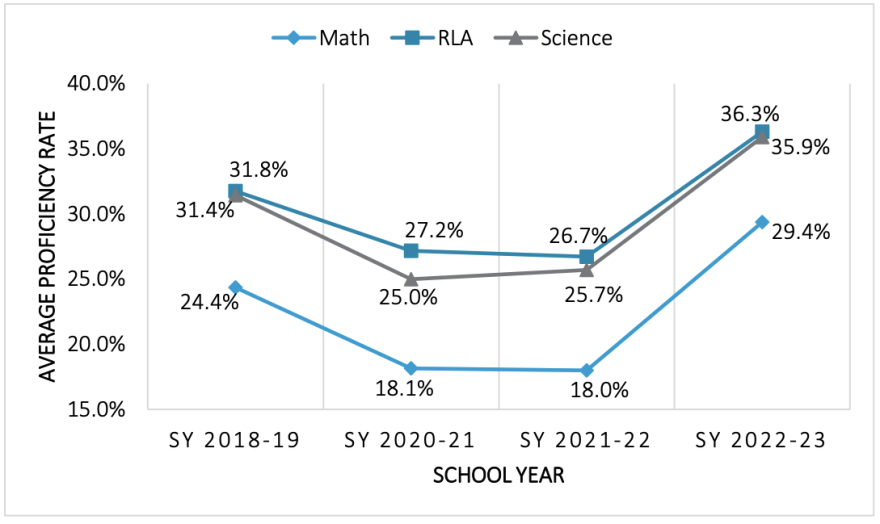In recent years, many school districts saw fewer absences and higher graduation rates among students experiencing homelessness thanks to help from pandemic-era programs, but advocates worry that progress could be upended because that aid is going away.
In our eight-state region, about $45 million in American Rescue Plan funds went toward helping families experiencing homelessness, funding things like social workers, bus tickets, grocery store gift cards and motel rooms.
“You know, finding a mom and two kids in a tent in a campground and making sure she has a gas card so she can go to work, so she can get the kids to school,” said Barbara Duffield, the executive director of SchoolHouse Connection, which advocates for homeless families.
According to a report from the U.S. Department of Education, those efforts may have worked. During the 2022-23 school year, there were fewer absences and higher graduation rates among students experiencing homelessness at local education agencies receiving these federal dollars, compared to pre-pandemic levels.
Reading, math and science proficiency rates also rose about 5% compared to the 2018-19 school year.

But since the funding was tied to the pandemic, it’s coming to an end, potentially leaving millions on the table. Most states in our region were able to use over 90% of their allocated money despite concerns of slow spending, but a couple of states have yet to touch hundreds of thousands of dollars.
Across the country, $800 million was allocated to this program — about $50 million of which went to our region — and it was supposed to be spent by the end of January 2025.
As of March 30, Wyoming had left 10.5% of its funds unspent ($208,880), while Nevada had more than a quarter left ($1,980,907).
Credit: U.S. Department of Education, as of March 30
Duffield said half of U.S. states, including Nevada, New Mexico and Montana, applied for extensions to spend these dollars under the Biden administration, but the Trump administration cut those extensions.
“Extending deadlines for COVID-related grants, which are in fact taxpayer funds, years after the COVID pandemic ended is not consistent with the Department’s priorities and thus not a worthwhile exercise of its discretion,” Secretary of Education Linda McMahon wrote in a letter.
Now, state education agencies can still apply for some extensions to use this money for specific projects, if they prove it’s “necessary to mitigate the effects of COVID on American students’ education.” Linda Finnerty, chief communications officer at the Wyoming Department of Education, said the state won’t be applying for these extensions.
According to Duffield, students with the greatest challenges nationwide are still being impacted from the multi-year disruption in their schooling.
“Students and families are very much still recovering from the impact of the pandemic,” she said.
This all comes amid what Duffield described as a complete turnaround in federal education funding.
“An environment in which there were resources way above what is typically provided, to one in which even the typical resources are being threatened,” she said.
Some schools, she added, are relying on local dollars to continue programs permanently, but others are laying off staff and shuttering projects.
In Wyoming, Finnerty said districts used funds for things such as emergency housing, clothing, hygiene items and school supplies.
“These were additional funds that they were able to do extra,” Finnerty said via email, adding there are other funds available to take care of individual students’ needs.
U.S. congressional representatives could sign a letter to advocate to allocate a new batch of money to help students experiencing homelessness nationwide. So far, Democrats from California and Illinois — and a Republican from Nebraska — are on board.
This story was produced by the Mountain West News Bureau, a collaboration between Wyoming Public Media, Nevada Public Radio (KNPR) in Las Vegas, Boise State Public Radio in Idaho, KUNR in Nevada, KUNC in Colorado and KANW in New Mexico, with support from affiliate stations across the region. Funding for the Mountain West News Bureau is provided in part by the Corporation for Public Broadcasting.




